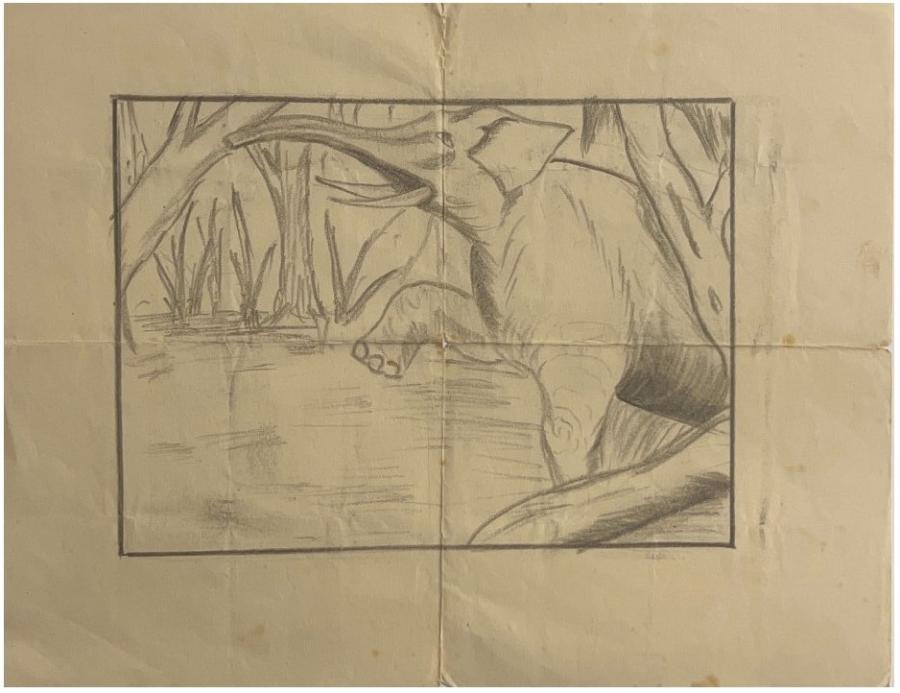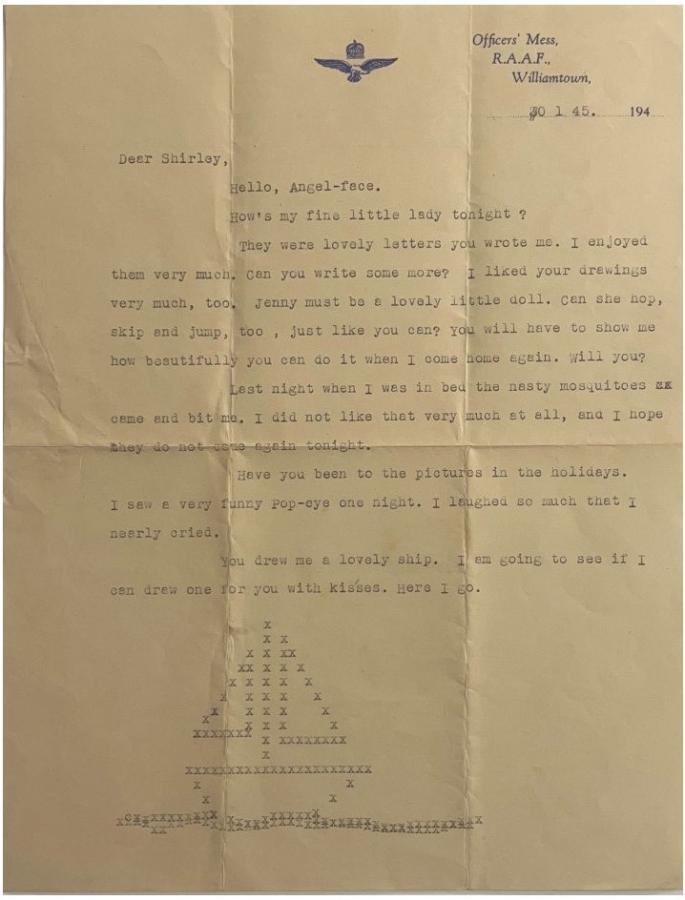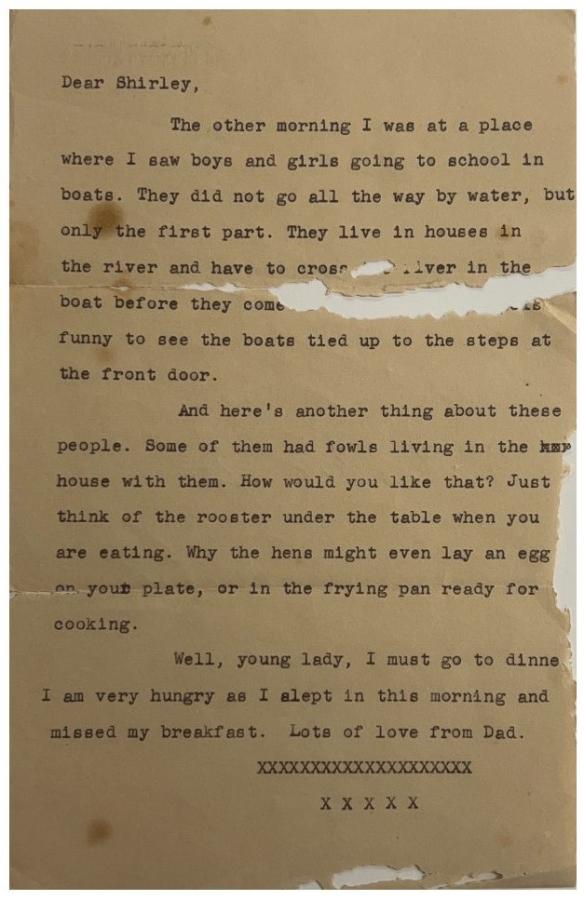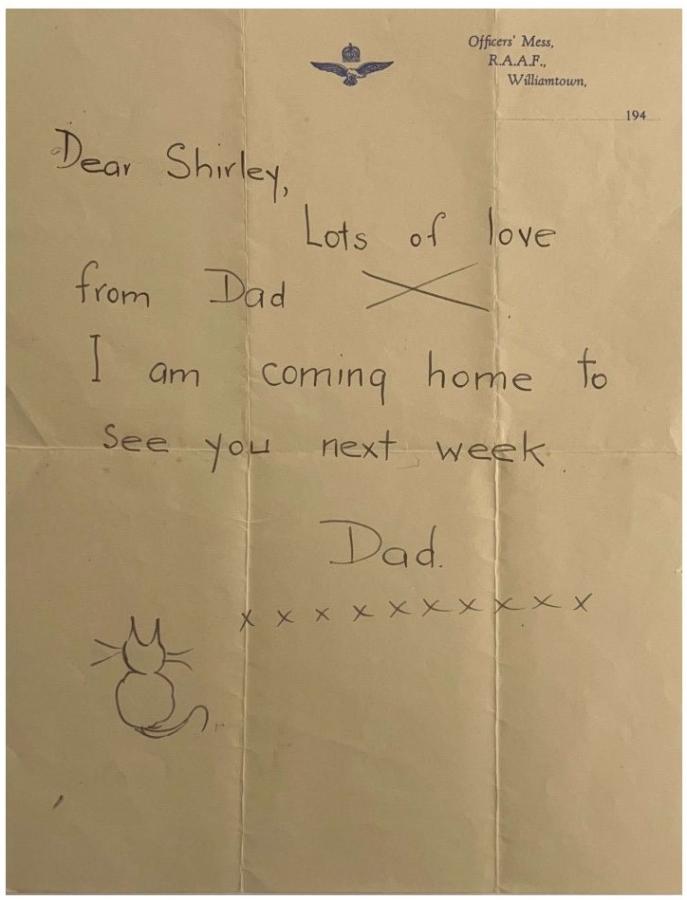Duty to Country, Devotion to Family
Two-year-old Shirley Elizabeth Haines’ world changed after her father enlisted for service in 1942. For the next three years her father was far from home, serving with the Royal Australian Air Force.
Murray Haines left Australia on Christmas Day 1942 with No. 30 Squadron, bound for Port Moresby in the Territory of Papua. He did not return until March 1944, and then on 11 May 1945, shortly before Shirley’s sixth birthday, he again deployed overseas, this time with No. 1 Squadron to Malaya and Indonesia, where he remained until October 1945.
During his time away from home, Haines wrote letters which presented his wartime experiences in a way intended to fill his daughter’s imagination with excitement and wonder.

Flight Lieutenant Murray David Haines, c. 1942–1945. Photograph courtesy of his daughter, Elizabeth.
While Haines was posted with No. 30 Squadron, it saw action in the South West Pacific Area, conducting strafing attacks and armed reconnaissance missions, as well as leading the Allied assault during the Battle of the Bismark Sea in March 1943.
At home in Australia, Shirley delighted in her father’s stories of comedic run-ins with local animals. Throughout several letters, Haines shared stories about a monkey unofficially adopted by colleagues: “He is a funny little chap. He jumps from tree to tree and climbs very quickly … We call him Little Willie.” In another letter, Haines told Shirley:
Doc’s monkey [Little Willie] has been a naughty little fellow. The other day he climbed onto my table, took up a pen and a bottle of ink and tried to write a letter. He made a big mess of the table. Another time he … put his hand in my pocket and took out my hankie. Now, wasn’t that a funny thing to do?
Little Willie’s antics continued.
The other day doctor’s monkey [Little Willie] wanted to pull a glass off the table, but the doctor would not let him … when he found out that he could not have it he sat down on the ground and cried just like a baby. Now, what do you think of that? I th[o]ught it was very funny.
Accompanying some of his colourful stories were drawings made by Haines. One drawing was noted as being “an elephant rushing through the forest. I think there was a lion chasing him, but I am not too good at drawing lions so I left him out of the picture”; another featured two ducks.
Haines tried his hand at making pictures using the keys of his typewriter.
Despite the distance between them, Haines made sure he stayed up-to-date with his daughter’s life, and impressed on his daughter the need to help out while he was away on service.
“I hope you are helping Mum a lot. Poor Mum has lots and lots to do.”
Haines also discussed people whose lives were unlike those Shirley experienced in suburban Australia:
I saw boys and girls going to school in boats … They live in houses in the river and have to cross [the] river in the boat … [it is] funny to see the boats tied up to the steps at the front door … And here’s another thing about these people. Some of them had fowls living in the house with them. How would you like that? Just think of the rooster under the table when you are eating. Why the hens might even lay an egg on your plate, or in the frying pan ready for eating.
Following his service with No. 1 Squadron, a report stated that Haines had “displayed keenness and ability which was far in excess of the service requirements … [and] been an inspiring personality to all his fellow officers”.
Haines returned to Australia in October 1945 and discharged from the RAAF in March 1946.
Murray Haines was awarded a Member of the Order of Australia for service to education in 1983. In 2004, his daughter published Murray Haines: A Story Researched and Recalled by Elizabeth Pratt, available at the National Library of Australia.
Haines’ collection of letters and drawings to his daughter, AWM2023.738.1, is held in the Memorial’s Private Records collection and is available for viewing at the Charles Bean Research Centre upon request.





